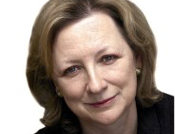Carla Carlisle on the legacy of Steve Jobs
An Apple convert from early on, Carla pays tribute to the talent and determination of Steve Jobs


The day after I bought my iPad, Steve Jobs died. In a way, I'd predicted it. I was sitting in the beautiful, uncluttered Apple store in Covent Garden with the patient advisor who was setting up my new rectangle of pure pleasure. All around us, his blue-shirted colleagues were installing a large screen. Greg (my advisor) told me the shop was closing at 3:30pm for a press event being relayed from America. No one knew what it was about.
‘Closing the store? That sounds serious. Has Steve Jobs died?' Greg swallowed hard. ‘I hope not.' He gazed straight ahead. ‘I don't think they could keep that a secret.'
That evening, via Apple news on my new iPad, I learned that the press event was about the latest iPhone. The next day, when a photograph of Jobs appeared on my iPad, I thought it was a message thanking me for my purchase. I then saw the dates below: 1955-2011.
I'm not one of life's technocrats. In the video era, I never managed to record a single programme. But from the earliest days, I've been an Apple person. Job's genius was in wooing millions like me to technology. For a start, every Apple computer I've owned has been beautiful. If you're going to spend a lot of time at a computer, you need to love it and looks play a big part. But only a part.
The ease of use made me feel cleverer than I am. They had a logic made for me. I also liked being a member of the Apple Mac club. Apple users were the poets, the writers, the film-makers, the thinkers. My PC friends thought we were smug dolts as the early Apples had limited communication with the wider world and were a lot more expensive.
But I liked everything about Apples, including the origin of the name. The original logo showed Isaac Newton sitting under a tree moments before the famous apple fell to the ground and sparked his understanding of gravity. It even included a quote from Wordsworth on the border of the image: ‘A mind forever voyaging through strange seas of thought, alone.' A year later, Jobs decided this was too complicated and went with a simple Apple instead.
Not only did I love my Apples,I was fascinated by the man behind them. Born in 1955 in San Francisco to a Syrian graduate student and his American girlfriend, who immediately gave him up for adoption, he was raised by Paul and Clara Jobs, a machinist who worked with lasers and an accountant, who lived in Silicon Valley long before it was Silicon Valley.
Sign up for the Country Life Newsletter
Exquisite houses, the beauty of Nature, and how to get the most from your life, straight to your inbox.
I was vaguely aware that Jobs dropped out of university after only one semester, but late one night a few years ago, Googling on my Apple desktop, I found the Commencement Address he gave at the Stanford graduation (http://news.stanford.edu/news/ 2005/June 15/Jobs-061505.html). It was a rare personal insight into the vegan hippy who, with no training as an engineer or designer, would become the successor to Thomas Edison and Henry Ford, and become the most successful businessman of his generation. I've sent copies to all my godchildren on their graduations. This morning, I sent it to my son, Sam.
I confess that, as much as I love my new iPad, I realise that I'm no longer a member of an enlightened sect. There are more than 28 million owners of iPads, and this year Apple's market capitalisation passed ExxonMobil, making it the planet's most valuable company. Meanwhile, I am typing these words on a beautiful Apple keyboard. The words appear on a screen in a font that encourages me to keep writing. I will ‘Save' and then ‘Send' with ease that feels like a miracle. I believe that Steve Jobs remade the world as completely as any man ever has and I am grateful.
* Give Country Life for Christmas and save up to 40%
Country Life is unlike any other magazine: the only glossy weekly on the newsstand and the only magazine that has been guest-edited by HRH The King not once, but twice. It is a celebration of modern rural life and all its diverse joys and pleasures — that was first published in Queen Victoria's Diamond Jubilee year. Our eclectic mixture of witty and informative content — from the most up-to-date property news and commentary and a coveted glimpse inside some of the UK's best houses and gardens, to gardening, the arts and interior design, written by experts in their field — still cannot be found in print or online, anywhere else.
-
 Six rural properties with space, charm and endless views, as seen in Country Life
Six rural properties with space, charm and endless views, as seen in Country LifeWe take a look at some of the best houses to come to the market via Country Life in the past week.
By Toby Keel
-
 Exploring the countryside is essential for our wellbeing, but Right to Roam is going backwards
Exploring the countryside is essential for our wellbeing, but Right to Roam is going backwardsCampaigners in England often point to Scotland as an example of how brilliantly Right to Roam works, but it's not all it's cracked up to be, says Patrick Galbraith.
By Patrick Galbraith